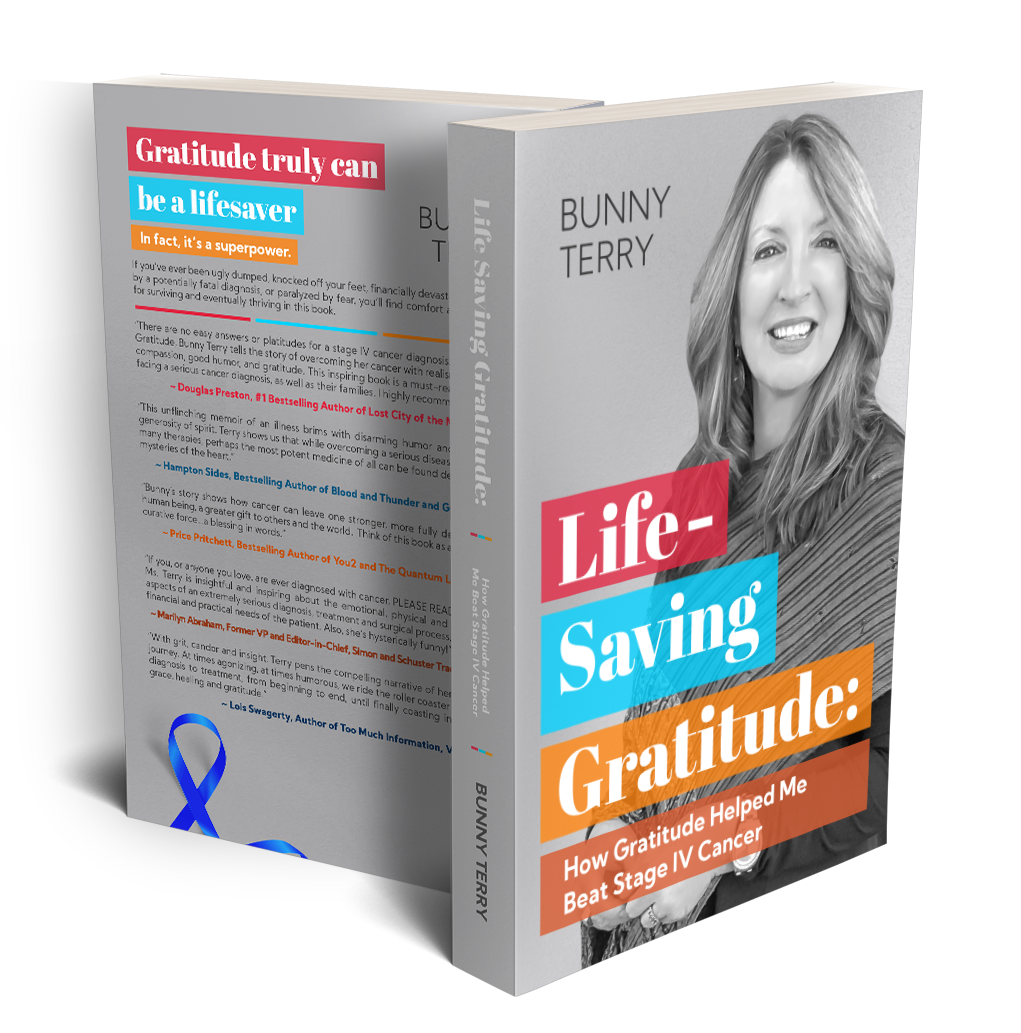About the Episode:
Bunny talks with Heather Reed, a division director at the Farm and Ranch Heritage Museum in Las Cruces, NM.
“For at least 4,000 years, people have been growing food in this region, and the New Mexico Farm & Ranch Heritage Museum tells this amazing story through interactive exhibits, demonstrations, oral histories, objects, and educational programs. It’s a story of survival, ingenuity, and hope. It connects generations, and weaves together people from various cultures that are uniquely New Mexico. “
Links
NM Farm & Ranch Museum
Las Cruces, NM
I Love New Mexico blog page
Bunny’s website
I Love New Mexico Instagram
I Love New Mexico Facebook
Original Music by: Kene Terry
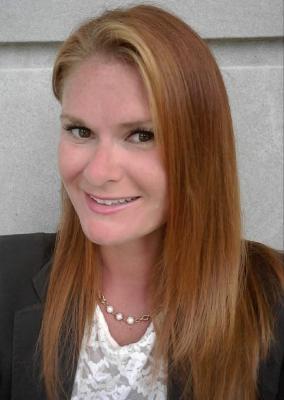
Featuring:
Heather Reed
As executive director at Farm & Ranch, Reed is responsible for the day-to-day operation of the museum and its programs, as well as establishing a long-term strategic vision. Reed works with the Governor-appointed board as well as Friends of the New Mexico Farm & Ranch Heritage Museum, coordinating policy and fundraising initiatives.
“Opened in 1998, the Farm & Ranch Museum brings to life the 4,000-year history of farming and ranching in New Mexico, across a campus that spans 47 acres. The museum connects the present generation to the history of farming and ranching in New Mexico, inspiring a deeper appreciation and understanding of the state’s rich heritage. The museum accomplishes this by providing exhibitions and programs that enable its users to understand and learn from the past in ways that enrich their present lives and help them shape a better future. The Museum’s main building contains more than 24,000 square feet of exhibit space, along with an area for meetings and events, a mercantile, and a theater. Extensive outdoor exhibits include sheep, goats, and cattle barns, a greenhouse, and historic farming and ranching machinery.”
Episode Transcript
Bunny: (00:00)
Hi there. I’m Bunny Terry, and you’re listening to the I Love New Mexico podcast. Whether you’re a native new Mexican, Who’s lived here for your entire life, or you’re just considering a visit, this episode is for you. Join us as we share a lot of New Mexico stories, talk about all things New Mexico, and include topics like what’s magical here, where you ought to visit, what’s happening, and the things you absolutely cannot miss in the land of Enchantment. We’re excited that you’re here, and we can’t wait to show you what an amazing place New Mexico is, because let’s face it, I love New Mexico Today on the I Love New Mexico podcast. We are talking to somebody who has, what I consider one of my, would be one of my favorite jobs in the world, um, because as, as my listeners know, um, I was raised on a farm in Northeastern New Mexico. So I have a specials place in my heart for the New Mexico Farm and Ranch Heritage Museum, which is in Las Cruces. And today I’m talking to Heather Reid, who is a division director at the Farm and Ranch Heritage Museum. And, and Heather, before we begin, before I, before I ask you a lot of questions, I just gotta tell you, I love the way that your, uh, website defi describes what the museum is. It’s, it’s, and so far, our listeners, I wanna read it. It says, for at least 4,000 years, people have been growing food in the region, and the New Mexico Farm and Ranch Heritage Museum tells this amazing story through interactive ex exhibits, et cetera. Um, here’s my favorite line… “It’s a story of survival, ingenuity, and hope. And the reason I love that line is because my dad, as a dryland farmer, was his life as a story of survival, ingenuity, and hope. And, and that’s what farming and ranching is all about in New Mexico.” But it, and then, and then the website said, says that, um, it connects generations and weaves together people from various cultures that are uniquely new Mexican. And, um, you know, uh, uh, New Mexico is uniquely, um, itself. So it seems perfect that we get to talk to you today. So, Heather, tell me about what you do every day and, and who you are, how you got to do this.
Heather: (02:37)
Oh, goodness. Uh, okay. Well, which one do you want first?
Bunny: (02:40)
Heather: (02:43)
Bunny: (03:42)
Well, I told you that I, I went in the very beginning, the museum, um, became it, I mean, it became what it is now in 1998, you said. And I was there at some point early, early in its inception. And then I went to a wedding there at, I would say 2005 or six. It’s, I gotta tell you, it’s the coolest place to have a wedding
Heather: (04:11)
We have a beautiful view of the Oregon Mountains. I mean, and in the morning, the sun comes up over the mountains and the birds are chirping, and it’s beautiful out here,
Bunny: (04:21)
So, tell us a little bit about what’s go, I, I’d love to hear about the, um, permanent exhibits first because mm-hmm.
Heather: (04:45)
No, and that’s the perfect way to set it up. Uh, we do have traditional exhibits that, that really lay the groundwork for the hundreds and thousands of years of the history of New Mexico farming and ranching. And, you know, it, it’s difficult to use the word farming and ranching when those are very modern terms. Um, native American cultures, you know, a thousand years ago, didn’t say Welcome to my ranch. So those, those words are there
Heather: (06:19)
And we feature, either a recent history, a current woman or an up and coming young female in the agricultural field. So this is a way for when, like you said, you, you came to a wedding here, even if you don’t come here for the museum, you walk by this exhibit. And the school children walked by, and recently we had a college girl on the wall, and these kids walking by fifth graders look up and they’re like, I know her. She was in my forage club, and she’s on the wall in a museum being recognized for her contributions to agriculture. So when I say that we are a community gathering place, it, it really truly is. We recognize the foundation that our ancestors laid for us, but then we also recognize, wanna recognize what we have built on top of that. And then being able to recognize the women who have contributed to the field is very important as well.
Bunny: (07:09)
And, you also, I saw, is is this a permanent exhibit or is it something, um, well, or is it not the Billy the Kid? What, what is, what is, I saw that on your website,
Heather: (07:21)
Bunny: (08:20)
That, well, the reason I mentioned that is because everybody is so fascinated, still mm-hmm.
Heather: (09:06)
Well, we have a couple of different, uh, options. Uh, we have our adventure crowd, which is for the, the little bitty ones. Um, uh, a room where they can climb up into a barn and actually ride little tractors and plant their crops. Um, so those are for the, for the itty bitty ones. We just renovated our dairy barn. That was actually the first building here, uh, before our main campus was built, everything. And we renovated that this past October. And it is a completely refreshed, um, children’s exploration area. It’s very interactive. There’s, um, hands on, there’s a giant milk carton table that you can sit at. There’s a big, uh, wheel of cheese, um, giant sticks of butter,
Bunny: (10:24)
Wow. Wow. I’m really, I’m really dying to get there. And you have a greenhouse, right?
Heather: (10:31)
We do have a greenhouse, yes. We have a landscaper on staff. I don’t know how he does it. He grows all these amazing plants. Uh, we actually have plant sales as well, um, that those are always a big hit. But yeah, you can come in and use the greenhouse, check those out. We have school programs, uh, for the children about the, uh, the greenhouse. Um, we also have cart tours. I don’t know if I mentioned that. So it is a big property, and especially when it gets hot out
Bunny: (11:16)
And, another exhibit, and this is really near and dear to me, because I think this is an art that, um, and, you know, people who see, um, saddles and tack don’t get what an amazing art it is. So talk about that exhibit. I it’s another one I wanna see really soon.
Heather: (11:34)
Bunny: (11:59)
So I’m really curious about the process that the, that the museum went through and still goes through of gathering. I mean, I seem to recall that at the time that, um, that you, that the staff, the new staff was working on getting the museum up and running, that there were people in my neck of the woods. I grew up over near Chum Carey, between Chum Carry and Clayton, who were donating items. How did that work? I mean, obviously you had to go and search,
Heather: (12:34)
You know, um, I honestly wasn’t here 25 years ago when they started that out. I’m not sure the exact process that they went through. But the way a lot of museums do operate, you, you rely really on the generosity of your community and the state to make those donations. And we usually don’t have to ask. We get donations every day of people coming in. But we also do have development policies. We can’t take everything. Sure. We do have a mission. And, for any museum, not just here, you, you’re limited on space and you can’t take everything and you only wanna take items that you know, you can take care of and protect. So we do try to be, I won’t say picky, but you know, a little you know, remain conscious that we can’t, we can’t take care of everything, but we’re always open to looking at what can be offered, what we currently have, where, where, what are we not, what don’t we have, you know, what is missing. And then, uh, trying to fill those gaps in our story. So definitely reach out if you have something
Bunny: (13:33)
Well, and you know, everybody’s got a barn full of, of stuff flipped over from, um, prior generations. Talk about the bridge. The bridge is, I mean, it’s the large, do you call it the largest artifact? Uh, what do you
Heather: (13:51)
Bunny: (14:29)
So you have the bridge that spans the arroyo. Where, where did it come from? Do you, I think it was it, I think it was over the, over the Pecos River.
Heather: (14:39)
It was, it was, it moved twice, if I remember correctly.
Bunny: (14:43)
It is so cool. It’s a great place to take family photos. I mean, do you have people, do people come out and hang out and do like family portraits or engagement photos?
Heather: (14:53)
They do. It’s a very popular place, especially when they have weddings here. They’ll go and have that as their backdrop.
Bunny: (15:01)
Well, it’s like, I, it seems like I’ve seen some family photos taken against your windmill with the Organ Mountains in the background. So, um, it is an amazing backdrop.
Heather: (15:13)
It is.
Bunny: (15:14)
Yes. Yes. And there was one other, oh, I’m a big fan of Peter Herd. Do you still have this, the Peter Herd exhibit? Is that a permanent exhibit?
Heather: (15:26)
We do have, um, the charcoal drawing, uh, that was the original sketch for, uh, what is in the library in Artesia, the, the actual, uh, larger artwork. So we do have, still have that on display.
Bunny: (15:39)
Oh, okay. Okay. Because I saw that. And here’s another cool thing. Um, if you ha if you grew up on a farmer ranch and had livestock in New Mexico, I’m gonna tell you that, and I hope you still have this, Heather, cuz I thought it was so cool. But my grandfather’s brand is, was on the wall down there somewhere. Do you still have that, where you have everybody’s brands on the wall?
Heather: (16:00)
We, they’re not on the wall. They’re actually in our courtyard. Yeah, in the courtyard, in the stone. So there’s actually, um, pieces of metal in the concrete. Um, so you can walk along and see each one of the brands. And then we have a resource room here, uh, where we have brand books. And you can come in and we have an archivist who will help you, uh, research your family brand, um, as well as your family history connected to your family ring.
Bunny: (16:28)
Because I was at, you know, my mom is the youngest of 10, and we were at home, um, a couple of weeks ago in Logan. And I said, mom, where is our brand? Because, um, a friend of mine who has a steakhouse and is opening a new one, was saying she wanted to, um, use our family brand. Um, that’s how she’s gonna identify the booths. And, and my mom’s like, I don’t even know what it looked like. So you have those records?
Heather: (17:00)
We do. We do. So you can come, like I said, we have a resource room and a wonderful archivist who, who will help you with all of that research and can always reach out to her. Um, give our call or email her and, and she’ll help you. You don’t even have to come in.
Bunny: (17:14)
Oh, good. That’s exciting. That’s really exciting. Mm-hmm.
Heather: (17:23)
We do, we do. Um, quite a bit of different, um, uh, paintings, a lot of pencil drawings. Um, Mr. Sheel, uh, we have a lot of his artwork. Tho those were very popular. A lot of pencil sketches of life on ranches. Um, they, they look like photographs. They look very real. And so you get up close and you’re like, oh, oh no, that’s actually drawn. It’s amazing.
Bunny: (17:48)
Nice. So we, so we have talked a lot about the museum, um, but we haven’t… this is the first time I believe that I’ve had somebody who is in Las Cruces on the podcast. I mean, we’re relatively new. I think we’re at like 31 episodes. So, um, let’s just assume, because this is very true mm-hmm.
Heather: (18:33)
Uh, might even be closer. It, it doesn’t take long to get to the border. Maybe half an hour.
Bunny: (18:38)
Yeah. Mm-hmm.
Heather: (18:49)
Well, that, that’s a big reason right there. We are very, very close to the border with not only Texas, but also Mexico. So we have a lot of different cultures and a lot of different people who live here, and they’ve all come together and melded. Um, so you have a lot of different experiences. We even, and this is pretty cool, I don’t know how many museums can say this. We get international field trips coming from Mexico.
Bunny: (19:12)
Wow.
Heather: (19:12)
Like on a bus
Bunny: (19:22)
That Is really cool.
Heather: (19:23)
Yeah. We, we had a group here actually, um, earlier in the month, uh, for Morris came on a field trip. So it’s neat to have all these different cultures and, and people traveling back and forth across both borders regularly every day for work. And, um, so you do, you, you see that in the, uh, the culture. You see it in the food. Um, and even I think one of the most fascinating things for me is, you know, I moved here and I knew it was a bilingual state, but the Spanish spoken down here is different than what is spoken in northern New Mexico. And it is even. Yeah. And I was like, wow. Like, I don’t know why I wouldn’t realized that, but it took, witnessing it, and I actually watched two people, to me, to my ears, it sounded like they’re both speaking Spanish and they were, but they couldn’t understand each other. And I was like, this is amazing. Like, you know, there’s so many different versions of even the language, um, from the, I mean it just, it’s every day there’s a new experience. It’s very neat to watch.
Bunny: (20:26)
And the weather is amazing. Mm-hmm.
Heather: (20:28)
Bunny: (20:42)
Heather: (21:11)
March has been a little chillier than normal. And again, I hate saying that because 65 is not chilly, but we’re used to it being warmer
Bunny: (21:18)
Right, right. Well, and the food is pretty amazing. I don’t, I don’t know if you love Green Chili as much as I do, but that’s the other thing about it, is that the food in Las Cruces is different than the food in Santa Fe. Mm-hmm.
Heather: (21:40)
You
Bunny: (21:41)
Do. Yeah. So if somebody was coming to Las Cruces for the first time ever, um, what would you suggest that they do o other than coming to the museum?
Heather: (21:52)
Right. We are definitely your number one spot,
Bunny: (22:39)
And when I lived there, when I was a student, one of the coolest places I lived was, I lived in Macia, um, which is, I mean, just down the road, is it like four miles?
Heather: (22:51)
Um, it’s not far
Bunny: (22:53)
Heather: (23:13)
It Was.
Bunny: (23:14)
I hope I’m not mixing that up.
Heather: (23:16)
Some of the, the people who I work with who have lived here their entire lives, they tell me they didn’t move here. The border moved.
Bunny: (23:24)
Heather: (23:25)
Yeah. Their families didn’t move to the us. The US border moved
Bunny: (23:29)
That’s cool. And what’s next at the museum? What’s coming up? I know you have one art, um, exhibit that’s going away. What’s, what are people gonna find this summer?
Heather: (23:42)
We do, um, like I said, we at Roy’s rotate out our art corridor with local artists. Um, our, that her land exhibit, we rotate that out about every four or five months. Um, currently we have Ms. Witty up there. Her family, um, has been in the ranching, uh, industry for a long time. Um, we are currently working on an exhibit, we’re partnering with N M S U on, uh, people who worked at the university or attended the university and have made major impacts on the field of agriculture throughout the state and the world. Um, actually not just New Mexico, but worldwide, but were connected to the university. So we’re gonna be doing an exhibit on that. Um, looking at, and, and it’s not just, you know, we talked earlier about what’s beyond farming and ranching and farm implements. These are people who, um, made big strides in food preservation.
Heather: (24:33)
You know, how, how do you preserve food so that you can, you know, farm one day and not have to cook every day,
Bunny: (25:43)
Yeah, I want people to understand sure, that, I mean, ag isn’t just, um, you know, what my dad did, which is, you know, plowing large swaths of land and, I mean this ag is, is, um, growing organic vegetables and, um, growing hemp or cannabis. I mean, it’s, it’s, it’s not quite the industry that it was probably, I’d say 70 years ago when my dad began his farming career. Mm-hmm.
Heather: (26:16)
It is very true. And that’s something that we wanna bring in. You know, STEM is really popular in the schools and just letting everyone know about that, as well know, farmers are using GPS now. They’re using drones, they’re turning on their watering systems from their smartphone. You know, they don’t have to drive all the way out into the field and turn, you know, a rusted knob and hope that it doesn’t break.
Bunny: (26:43)
Well, and it’s so essential. I mean, we’re all eating, you know. A couple of young women who, one of whom is a, uh, married into a well, and she came from, so didn’t just marry into a large dairy farms in Curry County. And, um, we, they were on the, the two of them, and one of them is in Nebraska, and the two of them have a podcast called Discover Ag. And, um, they weekly, these, I mean, these young women in their late twenties and thirties, and they’re online every week educating people about where food come from, comes from, as well as, um, some of the really prevalent myths that are, that are propagated about, um, you know, meat production and dairy production. And I mean, I think we just have to educate ourself about mm-hmm.
Heather: (27:57)
Well, and you know, you bring up a great point, whether it’s, um, agriculture or history in general, you can’t make it black and white. No. Everything is intertwined and gray and it, it’s all sticky and one things that we strive to do. You know, at museums we don’t, we don’t take a stance. We don’t create a thesis. Um, but we do try to show all sides to everything. And if it provokes you to wanna go learn more and explore or even think about something a little differently than we’ve done our job we’re not here to tell you what to think, just to encourage you to, to explore.
Bunny: (28:32)
To think
Heather: (28:34)
Yeah. Yeah. Or just, you know if even a month down the road you look at a tree differently, or a feel differently, or that farmer that you see in the store differently, you know, cool. Then, then we made a little bit of a difference.
Bunny: (28:46)
Nice. Mm-hmm.
Heather: (29:09)
Um, we’re at 4,100, uh, ding Springs Road. We are east of, uh, 25. So, um, I 25 kind of follows the Rio Grande, north and South, and the Oregon Mountains also run north and south. So we are nestled between the mountains and the highway
Bunny: (29:36)
Nice
Heather: (29:37)
It’s just beautiful. It really is. And we are, are kind of across the street from Tortuga Mountain, which is a really great short hike, and you can look out over the city and our museum, our entire campus.
Bunny: (29:50)
Well, I can’t wait to come back. Yeah, I can’t. I it’s gonna be so much fun. Thanks for taking time to visit with me about it.
Heather: (29:56)
Yeah, thank you. No, I love to share it. It, it’s like nowhere I’ve ever been before, so it’s always good to explore and, and the whole state, I mean, I can go an hour in any direction and have a completely different experience.
Bunny: (30:09)
Heather: (30:30)
Yeah. Makes great, great weekend trips.
Bunny: (30:32)
Heather: (30:37)
Absolutely. Come on down. We always have something new going on.
Bunny: (30:41)
Good.
About the Podcast
Recent Episodes
I Love New Mexico Teachers: Bunny Terry
About the Episode: Summer is coming to an end and a new school year is...
I Love New Mexico Food: Kirk Muncrief of AlbuKirky Seasonings
About the Episode: In New Mexico you know we love food AND we love spicy...
100th Episode Recap: Bunny & Johanna
About the Episode: The I Love New Mexico podcast has made it to 100...






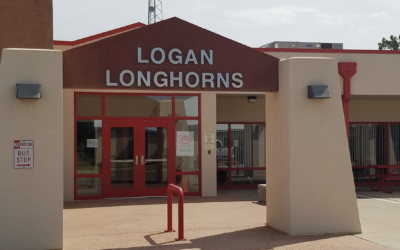
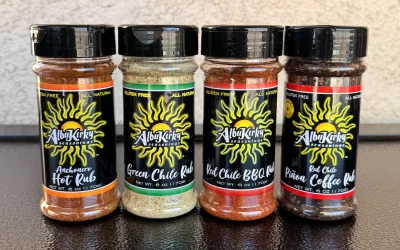
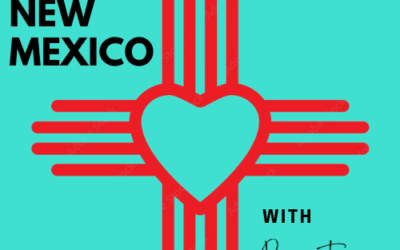
 Bunny Terry is a native New Mexican who grew up on a farm in northeastern New Mexico. Her first writing job was typing stories on index cards on her family’s Underwood, stories that were uncannily like the ones she read over and over in O Ye’ Jigs and Julips, her favorite childhood book. No one thought to save those index cards for posterity, although there is the theory sarcastically circulated by her siblings that they will certainly be worth millions someday.
Bunny Terry is a native New Mexican who grew up on a farm in northeastern New Mexico. Her first writing job was typing stories on index cards on her family’s Underwood, stories that were uncannily like the ones she read over and over in O Ye’ Jigs and Julips, her favorite childhood book. No one thought to save those index cards for posterity, although there is the theory sarcastically circulated by her siblings that they will certainly be worth millions someday. 